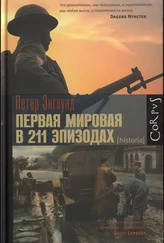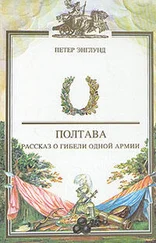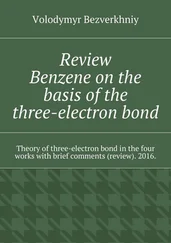It all started with the emergence of Czechoslovakia in 1918. The very name of the new state indicated that the country consisted of two peoples, the Czechs and the Slovaks, but this cleverly concealed the fact that 3.2 million ethnic Germans(compared to only 2 million Slovaks) were also living in the country.
The “Czechoslovak” Germans are a bit inaccurately called Sudeten Germans after the Sudeten mountain range, which stretches from the Elbe valley eastwards to Moravia. In reality, ethnic Germans, who were invited by the Czech kings to start agriculture in the kingdom’s fringe areas, had from the thirteenth century densely populated all border regions in Bohemiaand Moravia.
Compared to Central Europe’sminority standards in the interwar years, it’s fair to say that Czechoslovakia granted the Sudeten Germans generous rights.
True, they didn’t enjoy the status as one of the country’s official nationalities, and German was not accepted as one of the state’s official languages. But they had cultural autonomy with their own schools, universities, theatres and a multitude of organizations, and ethnic Germans were represented in each and every Czechoslovak government from 1926 to 1938. At one point, the leader of the of the Sudeten German Social Democrats’ was a certain Mr. Czech, while the boss of the Czech Social Democrats was Mr. Němec (German)!
Yet the economic crisis in 1929 made tensions between the Czech majority and the Sudeten German minority grow rapidly. Export-oriented Czechoslovakia was hit badly, but the Sudeten areas, heavily dependent upon light industry and mining, received an almost fatal blow. Poverty surged, and unemployment in the Sudeten areas was among the highest in Europe — which is one of the factors that explains why Czechoslovakia’s Germans became grossly recipient to Hitler’s propaganda, not least since der Führer , after seizing power in 1933 effected great measures to raise employment.
In the same year, Konrad Henlein, a gymnastics instructor from Karlovy Vary (see: Carlsbad English Bitters), established the overtly Nazi-friendly Sudetendeutsche Partei .
Officially, the SdP declared its loyalty to Czechoslovakia, but silently it struggled intensely for the annexation of the Sudeten areas into the Third Reich . When Nazi Germany swallowed Austria in March 1938, Henlein didn’t bother any more to conceal his true goal — to get Heim ins Reich . If s undisputed that Henlein was supported by a devastating majority of the Germans living in Czechoslovakia. The SdP itself had 1.3 million members, and in the municipal elections in May 1938 almost 90 percent of the Sudeten Germans gave the party their votes.
In late September 1938, the leaders of Europe’s then most powerful nations — Great Britain, France and Italy (but not the Soviet Union) — met up with Adolf Hitler in Munich to discuss the Sudeten question. Prior to the conference, Hitler had made it clear that annexation of the Sudeten areas into Germany was his final demand. Convinced that appeasement policy was the appropriate medicine to calm Hitler down, both France’s Premier Édouard Daladier and Great Britain’s Neville Chamberlain agreed to throw democratic Czechoslovakia to the Nazi wolves.
“They had the choice between dishonour and war,” Winston Churchill later commented on his predecessor’s behaviour. “They chose dishonour, and got a war.”
As a result of the tragic Munich Agreement — or the Munich betrayal , as the Czechs call it — Czechoslovakia was forced to cede over 40,000 square kilometres of its territory to Germany (and later smaller areas to the Polesand the Hungariansas well), with a population of roughly four millions. Some 800,000 inhabitants of these areas were ethnic Czechs, who had suddenly become inhabitants of the Third Reich.
You don’t have to be a psychologist to understand how traumatic this blow was for the Czechs (the Slovaks were in another situation, as the later occupation of Bohemia and Moravia enabled them to establish their own state), and it had several important long-term consequences:
After 20 years of independence under the First Republic, most Czechs were both eager and determined to defend their country militarily. Actually, Czechoslovakia was not that badly prepared. During the 1930s, the government had poured billions of korunas into the construction of a vast network of 260 concrete fortresses along the borders. Moreover, the mobilization that was announced in the autumn of 1938 was greeted with common enthusiasm in the Czech population. With an army totalling 1.1 million men, Czechoslovakia boasted the world’slargest ground forces after Germany, Japan, France and Italy.
Nevertheless, pressed by the big European powers and haunted by visions of a terrible bloodshed like the one that happened in Spanish Guernica a year earlier (the Luftwaffe was incomparably better armed than Czechoslovak Air Force), president Edvard Beneš decided to give in without a fight. This led to a widespread contempt for the country’s political leadership in general, and to the democratic ones in particular. “I have a plan, or more precisely, an aero-plane,” the Czechs spitefully distorted one of the president’s remarks after he had fled the country.
The parallel to King Friedrich’s flight after another national disaster, the Battle of White Mountain, and later also to Dubček’s behaviour after the Russianinvasion in 1968 is striking, and it underpinned the suspicion that Czech leaders tend to collapse when the country needs them as most.
Secondly, both Great Britain, widely admired in pre-war Czechoslovakia, and France, which was even a military ally, failed to help a small and threatened democracy in Central Europe (“Why risk our lives for a country we even can’t find on the map?” a British politicianreportedly asked). Ever since, many Czechs felt that they could not trust the Western democracies that participated in the Munich betrayal.
The Soviet Union, on the contrary, had no Munich blood on its hands. Except for Western Bohemia, Czechoslovakia was even liberated by the Red Army, which was a tremendous propaganda advantage to Stalin’s local henchmen, who used the Russians’ image as true friends and peaceful liberators to pave the country’s way to communism.
And finally, the “disloyal behaviour” which the Czechs felt that the Sudeten Germans had demonstrated against their common state before the war led to a rather uncompromising reaction after Nazi Germany was beaten. Already in May 1945, civilian Sudeten Germans were rounded up and harassed by members of the Revolutionary Guards, and then concentrated in large camps.
Later, at the Potsdam Conference in August 1945, Great Britain, France, the Soviet Union and the United States gave Czechoslovakia the formal go-ahead to finish the operation. The Czechs didn’t waste their time. By the end of 1946, about 2.9 million Sudeten Germans — including social democrats who opposed Henlein’s SdP — had been mercilessly chucked out of the country, without any more belongings than the few things they could carry with them. Historians still disagree, but estimates suggest that at least 23,000 persons died during this “transfer”, as it is officially called in Czech.
Within three years of the end of the war, the number of ethnic Germans in Czechoslovakia was reduced to 150,000 persons (less than five percent of the pre-war community), who immediately had to assimilate into their Czech surroundings.
Judged by modern standards, the expulsion of the Sudeten Germans suspiciously resembles collective guilt and ethnic cleansing as lately seen in the former Yugoslavia. To most Czechs, though, it was a fair and deserved repayment for their undeniable participation in crushing democratic Czechoslovakia in 1938. It has also convinced many Czechs, especially older ones, that co-habitation with foreignersnever brings anything good, and that multiculturalism is Western mumbo-jumbo.
Читать дальше








![Theresa Cheung - The Dream Dictionary from A to Z [Revised edition] - The Ultimate A–Z to Interpret the Secrets of Your Dreams](/books/692092/theresa-cheung-the-dream-dictionary-from-a-to-z-r-thumb.webp)



